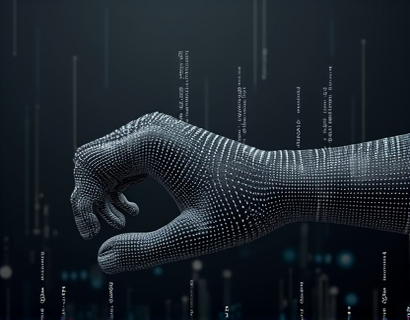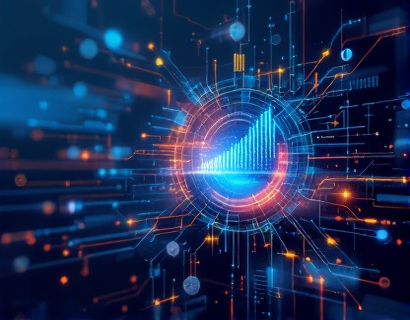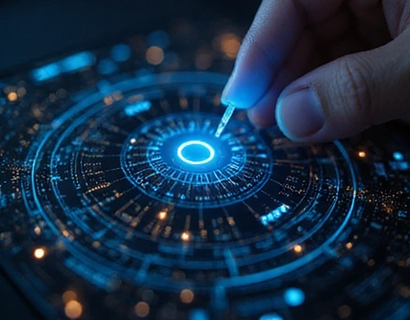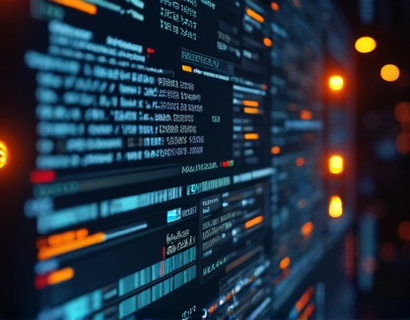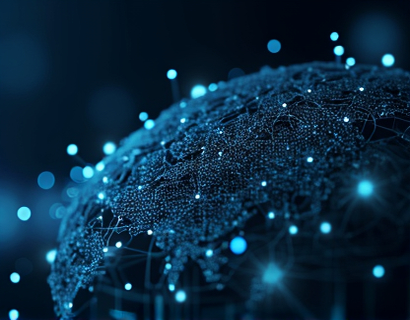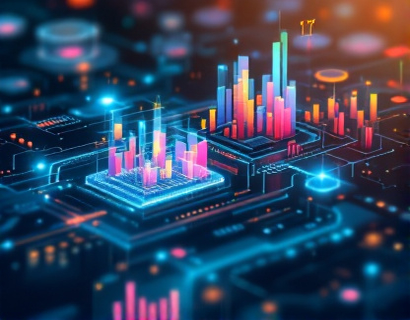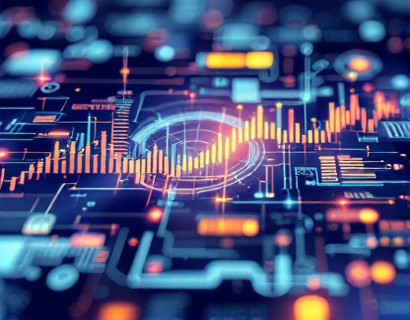Harnessing the Synergy of AI and Crypto: Elevating Digital Engagement in the Ucosystem
The intersection of artificial intelligence and cryptocurrency is giving rise to a new era of digital engagement, transforming how users interact with apps and services within the dynamic digital ecosystem. This article delves into the transformative power of combining these two cutting-edge technologies to create a seamless and enriched user experience. By exploring the synergy between AI and crypto, we can uncover innovative solutions that not only enhance user interactions but also pave the way for a more connected and intelligent digital future.
Understanding the Basics: AI and Cryptocurrency
To fully appreciate the potential of AI and cryptocurrency in digital engagement, it's essential to first understand the fundamentals of each technology. Artificial intelligence, a branch of computer science, focuses on creating systems that can perform tasks requiring human intelligence, such as learning, reasoning, and problem-solving. AI technologies include machine learning, natural language processing, and computer vision, which enable machines to interpret and respond to complex data.
Cryptocurrency, on the other hand, is a digital or virtual currency that uses cryptography for security and operates on a decentralized network, typically a blockchain. Bitcoin, launched in 2009, was the first and most well-known cryptocurrency, but thousands of others have since emerged, each with unique features and use cases. The decentralized nature of cryptocurrency ensures transparency, security, and resistance to censorship, making it an attractive option for various applications beyond mere financial transactions.
AI in Cryptocurrency: Enhancing Security and Efficiency
One of the most significant impacts of AI on cryptocurrency is in the realm of security. AI algorithms can detect and prevent fraudulent activities by analyzing patterns and anomalies in transaction data. Machine learning models can identify suspicious behavior and flag potential security threats in real-time, significantly reducing the risk of hacking and cyber attacks. This enhanced security is crucial for building trust in the cryptocurrency ecosystem and encouraging wider adoption.
AI also improves the efficiency of cryptocurrency operations. Smart contracts, self-executing contracts with the terms directly written into code, can be optimized using AI to automate and streamline various processes. AI can manage complex transactions, ensure compliance with regulatory requirements, and reduce the need for intermediaries, thereby lowering costs and increasing transaction speeds. This efficiency is vital for the scalability and practicality of cryptocurrency in everyday use.
AI-Powered Crypto Assets: Tokenization and Beyond
The tokenization of assets is another area where AI and cryptocurrency converge to create new opportunities. Tokenization involves representing real-world assets, such as real estate, art, or intellectual property, as digital tokens on a blockchain. AI can enhance this process by providing sophisticated valuation models, risk assessments, and market analysis. These insights help in creating more accurate and fair token prices, attracting a broader range of investors, and facilitating liquidity in the market.
Beyond tokenization, AI-driven crypto assets, such as AI-generated NFTs (Non-Fungible Tokens), are emerging as unique digital collectibles and art pieces. AI algorithms can create intricate and original digital art, which can be tokenized and sold on blockchain platforms. This fusion of AI and crypto not only opens new avenues for artists and creators but also offers collectors a new dimension of ownership and authenticity in the digital world.
AI-Enhanced User Interfaces in Crypto Applications
The user interface (UI) of crypto applications is a critical factor in user engagement. AI can significantly improve the UI by personalizing the user experience based on individual preferences and behavior. Machine learning algorithms can analyze user interactions and adapt the interface to provide a more intuitive and user-friendly environment. For example, AI can suggest frequently used functions, customize dashboard layouts, and offer context-aware recommendations, making the app more accessible and efficient to use.
Natural language processing (NLP) is another AI technology that enhances user interfaces in crypto apps. Chatbots and virtual assistants powered by NLP can provide real-time support and guidance to users, answering queries, explaining complex concepts, and assisting with transactions. This level of interactive support not only improves user satisfaction but also reduces the learning curve associated with using crypto applications.
Decentralized Finance (DeFi) and AI: Revolutionizing Financial Services
Decentralized Finance (DeFi) is a rapidly growing sector that leverages blockchain technology to create open, transparent, and accessible financial services. AI plays a pivotal role in enhancing DeFi platforms by providing advanced analytics, risk management, and automated trading solutions. AI algorithms can analyze market data, predict price movements, and execute trades with high precision, offering users better investment decisions and potentially higher returns.
AI-driven credit scoring models in DeFi can evaluate the creditworthiness of users based on a wide range of data sources, including blockchain transactions and social media activity. This approach can provide financial services to underserved populations and create a more inclusive financial ecosystem. Additionally, AI can help in detecting and mitigating systemic risks, ensuring the stability and reliability of DeFi platforms.
Gaming and AI: The Rise of Crypto Games
The gaming industry is another domain where AI and cryptocurrency are converging to create innovative experiences. Crypto games, which often utilize blockchain technology, offer unique opportunities for players to own in-game assets as NFTs. AI can enhance these games by creating more realistic and dynamic environments, intelligent NPCs (non-player characters), and personalized gameplay experiences. Machine learning algorithms can adapt the difficulty level based on the player's skills, ensuring an engaging and challenging experience for all users.
In--game economies can also benefit from AI by managing supply and demand, preventing inflation, and ensuring a balanced ecosystem. AI can facilitate seamless transactions between players and developers, using cryptocurrency as the medium of exchange. This integration not only enhances the gaming experience but also provides developers with new revenue streams and a more engaged user base.
AI and Crypto in Content Creation and Distribution
The content creation and distribution landscape is being transformed by the combination of AI and cryptocurrency. AI-powered tools can assist creators in generating high-quality content, from writing and editing to video production and music composition. These tools can analyze trends, suggest creative directions, and even automate repetitive tasks, allowing creators to focus on their core strengths.
Cryptocurrency plays a crucial role in rewarding content creators and incentivizing engagement. Platforms can use token economies to reward users for creating, sharing, and interacting with content. AI can optimize these token distributions based on user behavior and contribution, ensuring a fair and motivating system. This approach not only fosters a more active and creative community but also aligns the interests of creators and consumers in a decentralized manner.
Challenges and Considerations
While the potential of AI and cryptocurrency in enhancing digital engagement is vast, there are several challenges and considerations to address. Regulatory uncertainty remains a significant hurdle, as governments worldwide are still grappling with how to regulate these emerging technologies. Compliance with varying legal frameworks is essential to ensure the sustainable growth of AI and crypto applications.
Another challenge is the technical complexity involved in integrating AI and blockchain technologies. Developing robust and scalable solutions requires expertise in both domains, and the lack of standardized protocols can hinder interoperability. Education and collaboration between technologists, developers, and policymakers are crucial to overcoming these barriers and fostering innovation.
Future Prospects: The Ucosystem of AI and Crypto
The future of AI and cryptocurrency is bright, with the potential to create a cohesive and intelligent digital ecosystem, often referred to as the Ucosystem. In this ecosystem, AI and crypto technologies work in harmony to provide seamless, secure, and personalized user experiences. The integration of AI in blockchain applications can lead to more efficient, transparent, and user-centric services across various industries, from finance and healthcare to entertainment and education.
The Ucosystem will likely see the emergence of new business models, such as AI-driven decentralized autonomous organizations (DAOs), which combine the benefits of AI with the decentralized governance of blockchain. These DAOs can make data-driven decisions, optimize resource allocation, and ensure accountability and transparency in their operations. The synergy between AI and crypto will continue to drive innovation, creating a more connected and intelligent digital world.
In conclusion, the combination of AI and cryptocurrency is revolutionizing digital engagement by enhancing security, efficiency, and user experience. As these technologies continue to evolve and integrate, the Ucosystem will become an indispensable part of our digital lives, offering new opportunities and solutions that were once unimaginable. Embracing this transformative power can help us build a more inclusive, innovative, and resilient digital future.



